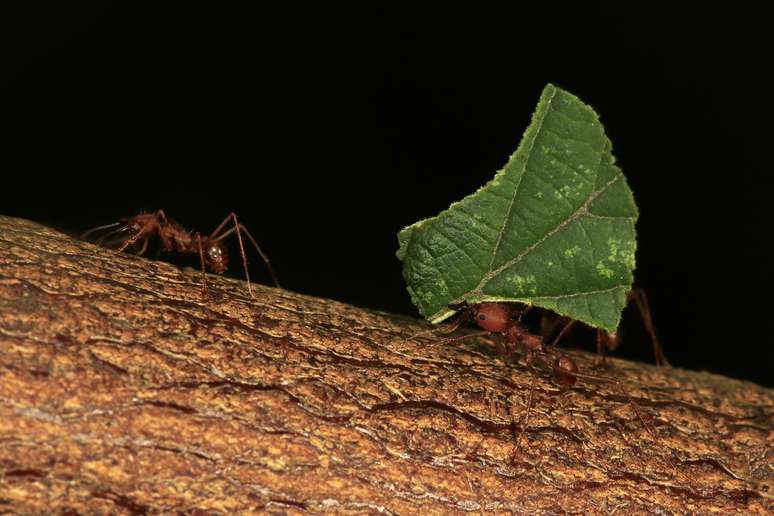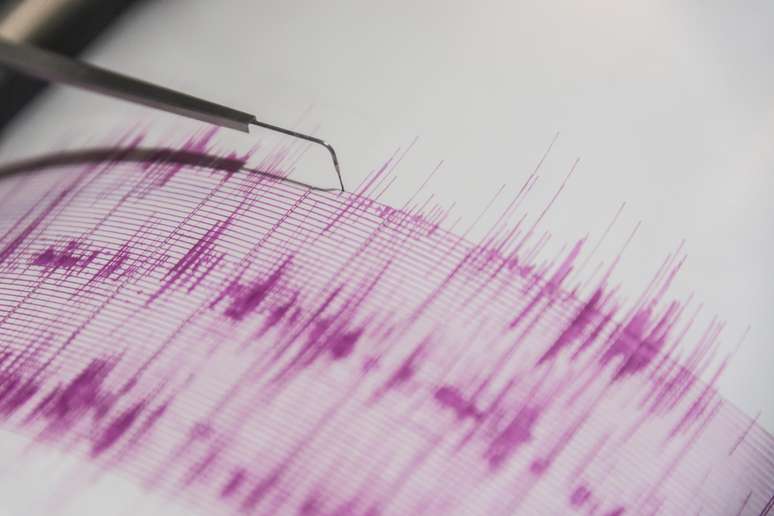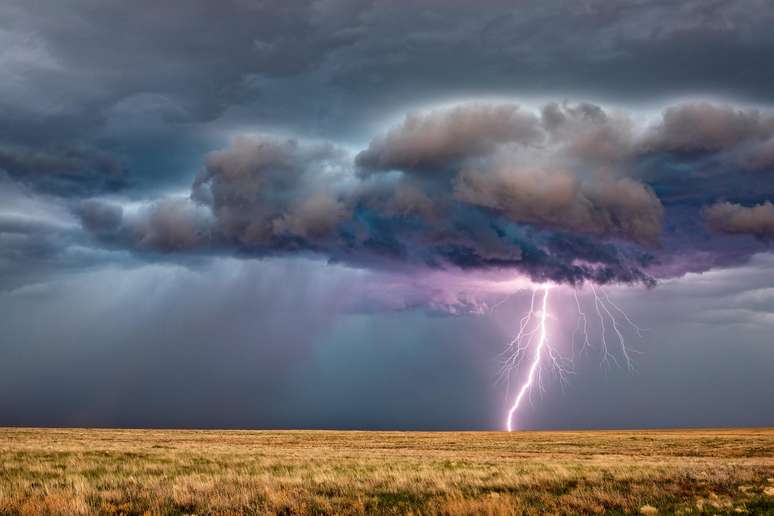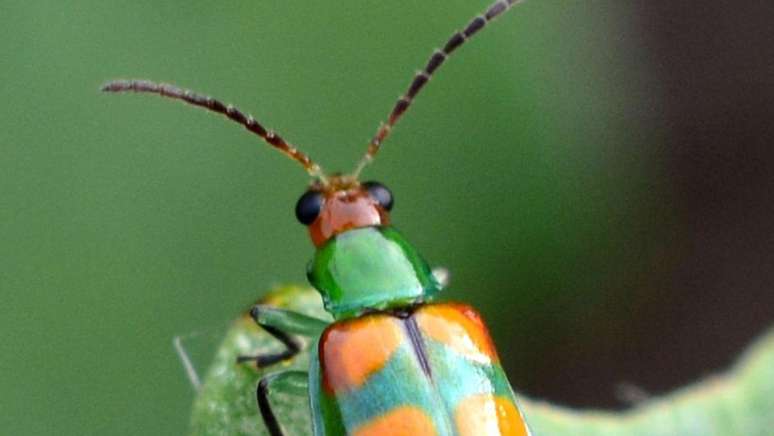Brazilian researchers have managed to scientifically prove that animals can predict storms, winds and even earthquakes. Understand
To claim that animals can predict storms is not a utopia.
Brazilian researchers managed to scientifically prove that a change in the sexual behavior of insects can indicate the arrival of storms and winds.
The explanation lies in the insects’ ability to detect the slightest changes in atmospheric pressure in nature, according to entomologist and USP professor José Maurício Simões Bento.
A study conducted by the Department of Entomology and Acarology of the Luiz de Queiroz College of Agriculture (ESALQ), of the University of São Paulo (USP), in Piracicaba (SP), in collaboration with researchers from the State University of the Midwest (Unicentro) and of the University of Western Ontario, Canada, have shown that insects predict sudden changes in the weather and give indications through changes in their sexual behavior.
“What we have noticed is that, when there is a low air pressure event, which normally precedes a rainstorm, the insects stop mating and seek shelter. This generally occurs between four and six hours before rain, providing some predictability. , explained the professor.
The discovery of this ability in insects and their behavior change started after Professor Bento and his team noticed that, on rainy days, the insects did not mate, even with all controlled temperature and humidity conditions in laboratory.
“Since the force exerted by atmospheric pressure is the same whether you are in an outdoor or indoor environment in a laboratory (or home), we set out to prove our hypothesis, based on the sexual behavior of bugs,” he says.
In the study, the scientists analyzed three distinct species of insect commonly found in Brazil: the beetle, popularly known as ‘brasileiro’ or ‘patriot’, due to its green color and yellow spots (Diabrotica speciosa); the potato aphid (Macrosiphum euphorbiae) and the grass caterpillar (Pseudaletia unipuncta).
With the help of a barometric chamber – a piece of equipment that can control or change atmospheric pressure – the researchers were able to demonstrate that, under a drop in atmospheric pressure, the three insect species reduced their sexual activity and they coupled less than under normal pressure conditions.

“Unlike us humans, who have a clock that shows us the time of day, allowing us to ‘keep the times’, most insects are guided by dawn and dusk (dusk). Therefore, many of them they mate at these times, as a prearranged encounter, regardless of the time of year.However, what we noticed in our study is that, as pressure dropped and rain predictability, they avoided these encounters to mate and sought shelter “.
This is because insects have very keen survival instincts in the wild.
“The mere impact of a raindrop may seem small to us humans, but for these tiny organisms, such as insects, it can be fatal.”
Now, scientists are trying to find out what structures in the insects’ bodies make them able to sense changes in air pressure hours before a storm.
“We have already demonstrated that insects are able to predict storms and windstorms to survive. They are living beings that have evolved over millions of years, which makes them largely adapted on Earth. Now we want to find out more with them, and unravel their structures by improving our weather forecasting methods,” Bento stressed.
Ants speed up the transport of leaves
Another research by the group conducted at the Luiz de Queiroz Agricultural School, at the USP of Piracicaba, showed that leafcutter ants, also called leafcutter ants (Atta sexdens) begin performing routine leaf cutting and hauling tasks more quickly, hours before a thunderstorm.

“Like other insects, ants can sense the arrival of rain and speed up their work, with the aim of collecting and storing as much food as possible for the nest,” explained Bento, who also led the project. .
The study carried out using a barometric chamber was divided into phases: in the first, to simulate the arrival of rain, the scientists introduced the leaf-cutter ants into an environment with low atmospheric pressure; and, in the other phases, they simulated conditions of stability and high pressure, which represent a limited risk of rain and thunderstorms.
The results showed that in a low pressure condition – indicative of rain – the ants left their nests 2.8 times faster than when the pressure was constant.
It was also shown that between 1.5 and 2 times more leaves were cut and carried to the nest by ants during the drop in atmospheric pressure.
“The team’s effort to transport and return more food in less time, in the face of an impending storm than normal conditions, demonstrated the high individual decision-making ability of insects when faced with an indication of risk,” he said. concluded.
Do animals predict earthquakes?
In addition to storms, researchers have been trying for years to scientifically prove whether animals can predict earthquakes. And, if so, how.

It is in the search for these answers that Professor Jean Pierre Raulin, coordinator of the Mackenzie Center for Radio Astronomy and Astrophysics (CRAAM) participated in a study that explained what led birds and mammals of the Yanachaga Chemillen National Park, in Peru, to leave the region days ago before the Contamana earthquake, measuring 7.0 on the Richter scale, hit the Peruvian Andes in 2011.
In world literature, the earliest recorded reference to unusual animal behavior before a natural disaster dates back to 373 BC, when the Greek historian Thucydides reported that rats, dogs, snakes and weasels abandoned the city of Helix, Greece, just days before a catastrophic earthquake.
Together with the British researcher Rachel Grant and Friedemann Freund, from the NASA space agency (USA), Jean Pierre found an explanation: the gas that escapes from below and comes to the surface by the movement of the tectonic plates increases the production of positive ions in the atmosphere, which, perceptible by the animals, causes an increase in the levels of serotonin in the animals, leaving them agitated.
“That’s why they left the region before the earthquake.”
To arrive at the conclusion, each researcher studied the behavior of the animals before the earthquake in a different way.
From the cameras installed in the park, which were activated automatically when the animal passed in front of them, without being seen, the researchers attested that, on an average day, the animals were seen, on average, from 5 to 15 times a day. day .
“However, in the 30 days leading up to the earthquake, we noticed that the number of animal sightings gradually decreased until it reached zero on the day of the earthquake,” said Jean.
At the same time, monitoring the propagation of low-frequency radio waves, in the days preceding the earthquake, it was found that the same atomic particles released from the gas (by the movement of tectonic plates) caused changes in the radio waves of the atmosphere in the Region.
“By pooling the data, we came to the conclusion that this may actually have influenced the behavior of the animals to flee the region before the earthquake occurred.”
How does human weather forecasting work?
Since before Christ, observing time has been crucial for humanity.
In the past, it was by observing the sky that one predicted whether it would rain or not. The goal was to avoid losses in the cultivation of crops that depended on rain cycles.
Even the Bible, in Matthew chapter 16, verses 2 and 3, mentions how the weather was predicted at the time of Jesus. “There will be good weather, because the sky is red. And in the morning there will be a storm, because the sky is deep red.”

However, it has been since the development of science that humans have started using equipment to decipher when it would rain.
It was from the 16th century, for example, with the development of the thermometer (temperature) and the barometer (atmospheric pressure), that time began to be predicted by man through technology.
So, in addition to the thermometer and barometer, professionals have started using a multitude of new technologies to predict whether it will rain or not.
This is how, currently, meteorologists predict the weather using atmospheric data provided by weather stations; satellite images; and weather radars installed in different parts of the world.
The studies that make it possible to identify sudden changes in the weather are based on data on rainfall, winds, relative humidity and atmospheric pressure itself – which animals are able to capture without the use of technological equipment.
In Brazil, the National Institute of Meteorology (Inmet) alone operates 750 weather stations.
As a rule, automatic stations capture data and send it to a meteorological center, where, using supercomputers, meteorologists carry out simulations with the support of satellite images of weather forecasts for the next few hours.
These observations, carried out systematically, uniformly and at pre-established times, allow human beings to know whether or not it will rain in a given place.
Animals can help predict natural disasters
With the enormous difficulty encountered in predicting earthquakes, the question arises: will humans be able to predict storms and earthquakes in advance, based on the observation of animals?
Professor at the University of São Paulo (USP), José Maurício Simões Bento; and Jean Pierre Raulin, of the Universidade Presbyteriana Mackenzie, say yes, but rather defend the need for greater investment in research on the subject worldwide.
“The research is just one more indication of how animals don’t need humans to survive in the wild, but how much we do need them,” Bento defended.
Source: Terra
Rose James is a Gossipify movie and series reviewer known for her in-depth analysis and unique perspective on the latest releases. With a background in film studies, she provides engaging and informative reviews, and keeps readers up to date with industry trends and emerging talents.







